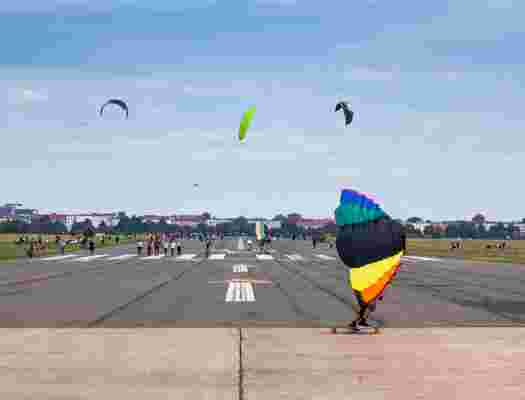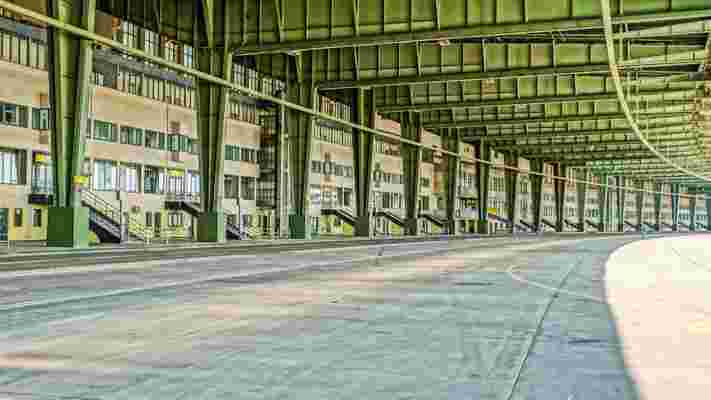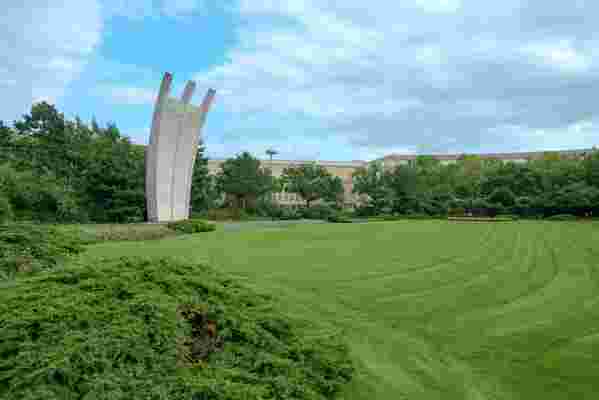Berlin’s Tempelhof Airport, which was built in the 1940s and closed in 2008, is still actually open—in another way. You can’t depart a flight here, but you can picnic on its premises and ride your bike down the runway, as the airport is now a public park. But what about inside the airport? If you want to peruse this historic 1940s building, guests are only permitted during private group tours. That will change next year when the airport reopens its doors to host the creative scene. They’re calling it Berlin Creative District, and it might feel like New York’s Meatpacking District or London’s Brompton Design District.

The former airport features areas for cycling, skating, jogging, and dining. Here, visitors take advantage of the open space afforded by the runway.
This modernist airport, built in limestone, is known for its stark, symmetrical design. It was built under Hitler; it was used as an U.S. Air Force base from 1945 to 1993; and during the Cold War, it was the only airport that linked West Berlin to the outside world. It is where the rich and famous flew in and out, from Sean Connery to Italian actress Gina Lollobrigida.

A look at the now-defunct Tempelhof Airport, a structure that's attracted many creative types from Berlin to use as an art gallery.
Now, the airport's former U.S. Army Officer’s Hotel will be turned into a Digital and Innovation Center with office space for startups, creative institutions, and artist studios (in fact, some start-ups are already based in the airport, including creative agencies, with more creative space to come).
The airport will also open a new historic museum in hangar 7—which has recently been a much larger refugee camp—called the Allied Museum, which aims to tell the story of how the British, French, and U.S. armies fused forces to take on the Nazi regime. The museum, which is relocating from the city's far-flung district of Zehlendorf, will put military trains, helicopters, tanks, and airplanes on view in the sprawling hangar.

The former airport allows ample public space for picnics and other social gatherings.
Also expect a new visitor center and the chance to peruse the nearly mile-long rooftop, which will become an exhibition space called the Gallery of History, expected to host events and parties.
It's part of the reconstruction and preservation of this historic building over the past two years, which has cost $4.2 million. “The district welcomes the launch of the airport building as the city's most centralized creative district,” said Jutta Heim-Wenzler, CEO of the Tempelhof Projekt, in a statement. “Since the closure, the district has accompanied the different development strategies for the airport. After the opening of the airport field for all, it is only logical to make the building accessible to all.”
